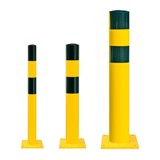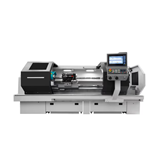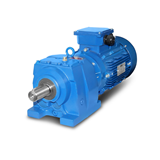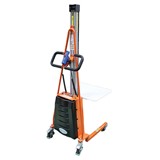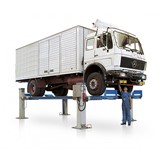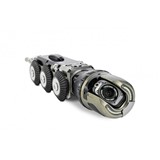Discover motor grader prices in Australia. Get expert buying tips, financing options, and compliance advice to choose the perfect grader for your project.
Key takeaways
- Motor grader prices in Australia range from $100,000 to over $700,000, depending on size, brand, and features.
- Compact graders (100–130 HP) start around $100,000–$300,000, while heavy-duty models (200+ HP) can exceed $500,000.
- Used graders offer significant savings, with reliable units starting from $80,000 depending on hours and condition.
- Ongoing maintenance costs average $10,000–$25,000 annually, including wear parts and fluids.
- Financing options through equipment loans and leases can offer repayments from $3,000/month based on 5-year terms at ~6.5% interest.
- Australian buyers must ensure compliance with AS 5327:2019 and relevant Work Health and Safety (WHS) Regulations.
Introduction
A motor grader is a cornerstone piece of earthmoving equipment, crucial for road construction, mining, and large-scale civil projects across Australia. Whether you're a contractor looking to expand your fleet or a civil works buyer seeking to upgrade, choosing the right grader is key to performance, reliability, and ROI. This buying guide gives you an in-depth view of the Australian motor grader market—covering types, pricing, operational insights, parts, financing, and compliance—so you can make a fully informed purchase.
Types of motor graders
Motor graders in Australia vary based on engine power, blade size, and control system. Here’s a breakdown:
1. By size and horsepower
- Compact graders (100–130 HP):
Ideal for light grading, subdivision roads, or small council work. - Mid-size graders (140–180 HP):
Versatile for medium to large projects; popular in regional councils and construction. - Heavy-duty graders (200+ HP):
Used in mining, highway construction, and major infrastructure projects.
2. By control type
- Manual control graders: Traditional joystick or lever-based control—lower cost but requires skilled operators.
- Automated/Smart graders: Include GPS, laser, and 3D machine control for precision grading. More expensive but reduces human error and speeds up tasks.
Motor grader prices in Australia
Motor grader prices in Australia vary significantly depending on the size, power output, brand, condition, and included features. Here’s a general guide to help you understand what to expect in 2025:
- Compact motor graders (100–130 HP) in new condition typically range from $100,000 to $300,000, making them ideal for local councils or smaller contractors needing agility and cost efficiency.
- Mid-size motor graders (140–180 HP) usually fall between $280,000 and $450,000 when new. These models are versatile enough for roadworks, mining, and subdivision grading across regional and urban Australia.
- Heavy-duty motor graders (200+ HP) come with higher performance capabilities and start at $450,000, with some models exceeding $700,000, especially when equipped with GPS, automation, and premium brand components.
- Used motor graders, depending on age, usage hours, and service history, can be sourced for $80,000 to $350,000, offering good value for budget-conscious buyers or for short-term projects.
Tip: Always ask for the total cost of ownership, including delivery, insurance, and after-sales servicing.
Operating a motor grader
Operating a grader requires experience and precision. Here’s what you need to know:
Key operational considerations
- Operator licensing: In most states, a standard HR licence plus VOC (Verification of Competency) for graders is required.
- Site suitability: Ensure the machine’s turning radius and blade reach match your job site's demands.
- Fuel efficiency: Graders consume 15–25 litres/hour. Higher HP models cost more to run.
Maintenance and servicing
Keeping your grader in top condition reduces breakdowns and prolongs its lifespan.
Typical maintenance costs
- Annual servicing: $10,000 – $25,000 depending on usage and model.
- Major service interval: Every 1,000–2,000 hours; include fluid checks, filters, hydraulic system checks.
- Tyres: Can cost $2,000–$4,000 per tyre; full replacement can exceed $20,000.
Spare parts availability
- Always check availability of blades, filters, and seals before purchasing less-common brands.
Parts and attachments
Buying from brands with Australian dealer networks ensures easier sourcing of:
- Mouldboard blades
- Scarifiers
- Hydraulic controls and pumps
- Cabin upgrades (heating, air filtration)
Pro tip: Ask your dealer if parts are stocked locally or shipped from overseas.
Financing a motor grader
Motor graders are high-ticket items—financing makes them more accessible to SMEs and councils.
Financing options in Australia
- Chattel mortgage: Popular for asset-heavy businesses. You own the grader from day one.
- Finance lease: Lower upfront costs; often used by civil contractors.
- Operating lease: Good for short-term contracts or seasonal needs.
Example repayment plan
- Grader cost: $300,000
- Loan term: 5 years
- Interest rate: 6.5%
- Monthly repayment: Approx. $5,800/month (with balloon)
To explore flexible, fast, and competitive financing tailored for heavy equipment like motor graders, check out Easy Asset Finance. Their expert team can help you secure the best terms to preserve your cash flow and grow your business.
Tip: Use instant asset write-off provisions where applicable to reduce your tax liability.
Warranties and after-sales support
Always confirm the warranty coverage before committing:
- Standard warranties: 12–24 months or 2,000–4,000 engine hours
- Extended warranties: Available up to 5 years, often with additional cost
- After-sales support: Prioritise brands with established dealer support in your region
Compliance and certification
In Australia, graders must meet several standards for workplace and environmental safety.
Key compliance requirements:
- AS 5327:2019 – Earth-moving machinery – Safety requirements
- WHS Regulations 2011 (Safe Work Australia) for mobile plant operation
- Noise and vibration standards: Ensure cabin decibel levels are compliant
- Rollover Protective Structures (ROPS) and Falling Object Protective Structures (FOPS): Required for construction and mining sites
Inspection tip: Ask for a Pre-Delivery Inspection (PDI) certificate and documentation of all compliance features.
Applications across Australian industries
Motor graders are essential across a wide range of Australian industries — from large-scale mining operations to remote council road maintenance. Understanding how they’re used in different contexts can help you choose the right model, size, and attachments for your specific application.
Here’s how motor graders are commonly used across major sectors:
- Civil construction: Graders play a central role in roadworks, subdivisions, and site preparation. They're used for fine grading, slope shaping, and camber formation to ensure optimal water runoff.
- Mining and resources: On mine sites, motor graders maintain haul roads, remove debris, and improve drainage — critical for reducing tyre wear and increasing truck efficiency.
- Agriculture: Farmers use smaller graders to maintain farm access roads, reshape land for better irrigation, and level surfaces for fencing or crop establishment.
- Local government and councils: Councils across regional and remote Australia rely on compact and mid-size graders to maintain gravel roads, park tracks, and unsealed surfaces year-round.
- Infrastructure in remote and regional areas: In states like WA, QLD, and the NT, motor graders are vital for long-haul track upgrades and grading across vast distances where contractor support is minimal.
Operator training and safety resources
Operating a motor grader safely in Australia requires both formal qualifications and a deep understanding of workplace health and safety (WHS) responsibilities. Whether you're training in-house or contracting operators, compliance is key.
Here’s what you need to know:
- Licensing requirements: In most cases, a non-slewing mobile crane or plant competency is required. Grader operations may fall under the RIIMPO324F unit – “Conduct civil construction grader operations” – typically delivered through a Registered Training Organisation (RTO).
- WHS compliance: Operators must perform daily pre-start checks, complete Safe Work Method Statements (SWMS), and understand job-specific hazard assessments. Ensure you’re aligned with Safe Work Australia’s guidelines and your state or territory’s regulator (e.g. WorkSafe VIC, SafeWork NSW, etc.).
- Ongoing training: Many contractors invest in refresher training to upskill staff in newer GPS and automation systems. Training can be arranged through OEMs such as Caterpillar or Komatsu, or through accredited plant training centres.
For more information, visit training.gov.au or contact a local RTO that specialises in civil plant operation.
Motor grader inspection checklist for Australian buyers
Before you commit to a new or used motor grader — especially when buying at auction or second-hand — it’s essential to perform a thorough inspection. Below is a practical checklist designed to help Australian buyers avoid costly mistakes.
Pre-purchase motor grader checklist:
- Mouldboard: Check for wear, cracks, or excessive rust. Uneven edges could affect grading performance.
- Hydraulic system: Inspect hoses and connections for leaks or pressure loss. Run the machine and test blade articulation.
- Articulation point and frame: Look for excessive play, cracking, or welding that may indicate past damage or poor repairs.
- Tyres or undercarriage: Check tyre wear patterns or undercarriage component condition (for track-based graders). Uneven wear may point to alignment or suspension issues.
- Cabin controls and electronics: Confirm all switches, gauges, HVAC, and backup camera systems function correctly. GPS or grade control tech should be tested if installed.
- Engine and transmission: Start cold if possible. Listen for unusual noises, smoke, or hesitation when shifting gears.
- Service history and compliance plate: Match engine hours with logbook entries. Ensure the compliance plate is present and legible — this is essential for legal operation in Australia.
Frequently asked questions
1. How long does a motor grader last?
With proper maintenance, a grader can last 15,000–20,000 hours or 15+ years. Regular servicing is crucial.
2. Should I buy new or used?
- New: Better fuel efficiency, latest tech, full warranty
- Used: Cheaper upfront, but check service logs, hours used, and condition carefully
3. Can I rent a grader before buying?
Yes. Many suppliers in Australia offer rent-to-own options or short-term hire. Rates start at $1,200–$2,000/day.
4. What factors affect the long-term value and running costs of a motor grader?
The long-term value is influenced by maintenance needs, fuel efficiency, parts availability, ease of operation, and how well the grader holds up under Australian project conditions.
5. Is GPS control worth the extra cost?
If you're managing fine grading or large-scale jobs, yes—automated control reduces errors, saves time, and improves outcomes.
Final thoughts
Purchasing a motor grader in Australia is a significant investment—whether you're building roads in regional NSW, grading mine haul roads in WA, or running a civil contracting business in QLD. By understanding machine types, budgeting accurately, prioritising maintenance, and ensuring compliance, you can secure a high-performance machine that delivers consistent results and strong ROI.
If you're comparing quotes or want help finding local suppliers, IndustrySearch helps you to connect with reputable sellers across Australia.




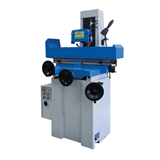

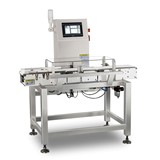
-160x160-state_article-rel-cat.png)
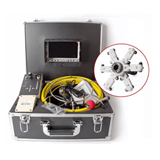
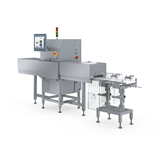

-160x160-state_article-rel-cat.png)
